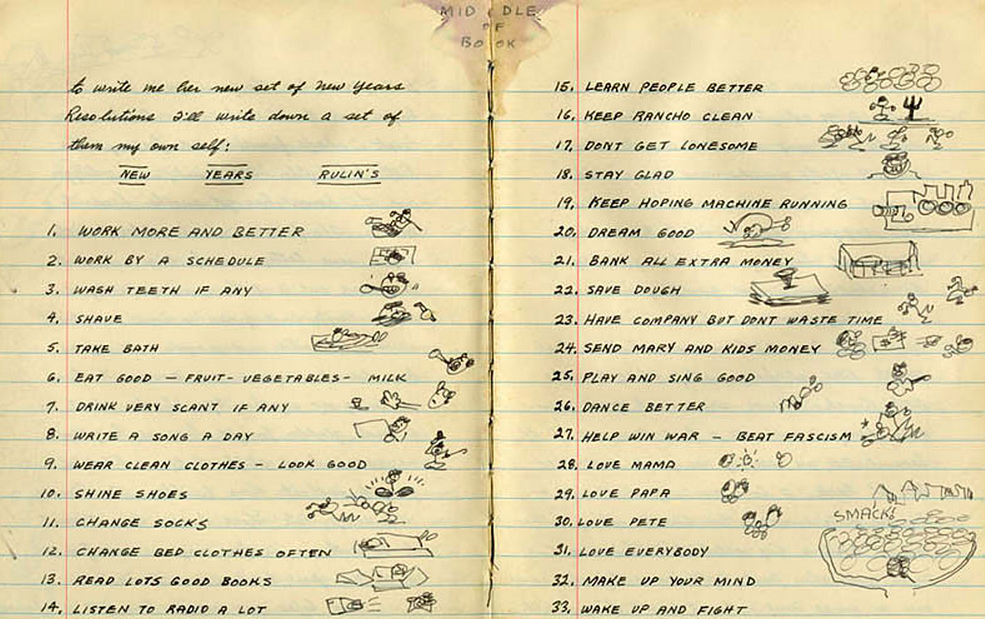in 2018 sluiten we terug aan bij de traditie van de maandelijkse oplijsting der 'aanwinsten', boeken die ik deze maand uit allerlei dubieuze krochten naar mijn hol heb versleept.
Koster, Frank, Studenten van Proletariaat tot Praatgroep. Een verhaal over de nijmeegse studentenbeweging tussen 1970 en 1976, vooral over de socialistiese studentenbond politikologie, Nijmegen, 1979.
Servotte, H. (red.), Christenen over het lijden. Pascal - Newman - Kierkegaard - Teilhard de Chardin, Patmos, 1987.
Benyaich, Bilal, #radicalisme #extremisme #terrorisme, Van Halewyck, 2015.
Guevara, Ernesto Che, Boliviaans dagboek, Van Gennep, 1975.
Zweig, Stefan, Tolstoï, éditions Victor Attinger, 1928.
Pamuk, Orhan, Istanbul. Memories of a City, FaberandFaber, 2005.
Allegaert, P. (red.), Het Hart, Snoeck, 2004.
1.31.2018
1.29.2018
blauwe vlinders
Vandaag een documentaire over iets geheel anders. Diertjes, kleuren en vlinders, vooral vlinders.
1.25.2018
Raveschotlezing: de Gentse middeleeuwse baksteen
Vanavond organiseert de Stad Gent met GVSALM de jaarlijkse Raveschotlezing.
Thema vandaag de baksteen in Gent. dr. Vincent Debonne geeft de lezing 'Flanders Technology in de middeleeuwen. Bouwen met baksteen in Gent in de 13de en 14de eeuw.'
Dit alles, met aansluitende receptie, geheel en al gratis, om 20u in de Cultuurkapel Sint-Vincent, Sint-Antoniuskaai 10, Gent.
Tot straks!
Thema vandaag de baksteen in Gent. dr. Vincent Debonne geeft de lezing 'Flanders Technology in de middeleeuwen. Bouwen met baksteen in Gent in de 13de en 14de eeuw.'
Haast uit het niets verrezen omstreeks 1200 in verschillende gebieden in Noordwest-Europa monumentale gebouwen in baksteen. Het nieuwe bouwmateriaal werd al gauw erg populair - als baksteen vandaag voor ons vanzelfsprekend is, dan is dat dankzij de pioniers van de middeleeuwen.
In het graafschap Vlaanderen werden de eerste gebouwen in ‘gebakken steen’ opgetrokken in de kuststreek. Waarschijnlijk werd baksteenbouw voor het eerst uitgeprobeerd en ontwikkeld in Brugge, mede dankzij de contacten die men daar had met Noord-Duitse handelssteden aan de Oostzee, met name Lübeck. Hoewel de Vlaamse steenbakkerij en baksteenbouw dus niet zijn uitgevonden in Gent heeft de stad toch een belangrijke en geheel eigen plaats in het baksteenlandschap van middeleeuws Vlaanderen.
Zo bezit Gent de oudst bewaarde bakstenen gebouwen in Vlaanderen buiten de kuststreek. Het toont aan dat het bouwbedrijf in middeleeuws Gent heel snel de innovaties uit de kuststreek, en ook het Waasland, heeft herkend, overgenomen en verder ontwikkeld. De gebouwen die in het begin van de 14de eeuw in Gent werden gerealiseerd behoren architecturaal en bouwtechnisch zelfs tot de meest geavanceerde baksteenarchitectuur van die tijd in Vlaanderen.
De middeleeuwse baksteenarchitectuur in Gent bezit ook enkele plaatsgebonden bijzonderheden die nauw samenhangen met de ligging van Gent centraal in Vlaanderen, als een logistiek knooppunt in de contactzone van verschillende regio’s. Aangezien men vlot kon beschikken over verschillende soorten natuursteen blijkt bij uitstek in Gent dat de keuze voor baksteen meer was dan een louter economische kwestie, maar ook werd ingegeven door de identiteit van de bouwheer. Onder meer de bedelorden hebben voor hun stedelijke bouwprojecten baksteen volop omarmd als een ‘modern’ bouwmateriaal.
Dit alles, met aansluitende receptie, geheel en al gratis, om 20u in de Cultuurkapel Sint-Vincent, Sint-Antoniuskaai 10, Gent.
Tot straks!
Labels:
agenda,
baksteen,
Gent,
Gentse geschiedenis,
GVSALM,
lezing,
Stadsarcheologie,
Vincent Debonne
1.24.2018
Ursula K. Le Guin. American Science Fictor and the Other
Ursula K Le Guin
dé grootmeester van de science ficton,
progressief schrijfster,
onderschat schrijver in een onderschat genre
maar wat een talent.
Voor de barbaren en de snobs die nog niet van haar gelezen hebben: rep je stante pede naar de lokale bibliotheek
voor de echte liefhebber, in 1975 bracht het tijdschrift 'Science Ficton Studies' een themanummer over de Science Fiction van Ursula K. Le Guin, met daarin volgend bijzonder lezenswaardige stuk van de grootmeesteres zelve.
meer op haar eigen website,
een interessante inleiding door Julie Philips van de NewYorker,
en deze 'where to start' van Slate.
dé grootmeester van de science ficton,
progressief schrijfster,
onderschat schrijver in een onderschat genre
maar wat een talent.
prachtig artwork door Essy May
Voor de barbaren en de snobs die nog niet van haar gelezen hebben: rep je stante pede naar de lokale bibliotheek
voor de echte liefhebber, in 1975 bracht het tijdschrift 'Science Ficton Studies' een themanummer over de Science Fiction van Ursula K. Le Guin, met daarin volgend bijzonder lezenswaardige stuk van de grootmeesteres zelve.
One of the great early socialists said that the status of women in a society is a pretty reliable index of the degree of civilisation of that society. If this is true, then the very low status of women in SF should make us ponder about whether SF is civilised at all. The women's movement has made most of us conscious of the fact that SF has either totally ignored women, or presented them as squeaking dolls subject to instant rape by monsters-or old-maid scientists desexed by hyper-trophy of the intellectual organs-or, at best, loyal little wives or mistresses of accomplished heroes.
Male elitism has run rampant in SF. But is it only male elitism? Isn't the "subjection of women" in SF merely a symptom of a whole which is authoritarian, power-worshipping, and intensely parochial? The question involved here is the question of The Other-the being who is different from yourself. This being can be different from you in its sex; or in its annual income; or in its way of speaking and dressing and doing things; or in the color of its skin, or the number of its legs and heads. In other words, there is the sexual Alien, and the social Alien, and the cultural Alien, and finally the racial Alien.
Well, how about the social Alien in SF? How about, in Marxist terms, "the proletariat"? Where are they in SF? Where are the poor, the people who work hard and go to bed hungry? Are they ever persons, in SF? No. They appear as vast anonymous masses fleeing from giant slime-globules from the Chicago sewers, or dying off by the billion from pollution or radiation, or as faceless armies being led to battle by generals and statesmen. In sword and sorcery they behave like the walk-on parts in a high school performance of The Chocolate Prince. Now and then there's a busty lass amongst them who is honored by the attentions of the Captain of the Supreme Terran Command, or in a space-ship crew there's a quaint old cook, with a Scots or Swedish accent, representing the Wisdom of the Common Folk. The people, in SF, are not people. They are masses, existing for one purpose: to be led by their superiors. From a social point of view most SF has been incredibly regressive and unimaginative. All those Galactic Empires, taken straight from the British Empire of 1880. All those planets-with 80 trillion miles between them!-con- ceived of as warring nation-states, or as colonies to be exploited, or to be nudged by the benevolent Imperium of Earth towards self-development-the White Man's Burden all over again. The Rotary Club on Alpha Centauri, that's the size of it.
What about the cultural and the racial Other? This is the Alien everybody recognizes as alien, supposed to be the special concern of SF. Well, in the old pulp SF, it's very simple. The only good alien is a dead alien-whether he is an Aldebaranian Mantis-Man, or a German dentist. And this tradition still flourishes: witness Larry Niven's story "Inconstant Moon" (in All the Myriad Ways, 1941) which has a happy ending-consisting of the fact that America, including Los Angeles, was not hurt by a solar flare. Of course a few million Europeans and Asians were fried, but that doesn't matter, it just makes the world a little safer for democracy, in fact. (It is interesting that the female character in the same story is quite brainless; her only function is to say Oh? and Ooooh! to the clever and resourceful hero.) Then there's the other side of the same coin. If you hold a thing to be totally different from yourself, your fear of it may come out as hatred, or as awe- reverence. So we get all those wise and kindly beings who deign to rescue Earth from her sins and perils.
The Alien ends up on a pedestal in a white nightgown and a virtuous smirk-exactly as the "good woman" did in the Victorian Age. In America, it seems to have been Stanley Weinbaum who invented the sympathetic alien, in A Martian Odyssey. From then on, via people like Cyril Kornbluth, Ted Sturgeon, and Cordwainer Smith, SF began to inch its way out of simple racism. Robots-the alien intelligence-begin to behave nicely, With Smith, interestingly enough, the racial alien is combined with the social alien, in the "Underpeople," and they are allowed to have a revolution. As the aliens got more sympathetic, so did the human heroes. They began to have emotions, as well as rayguns. Indeed they began to become almost human. If you deny any affinity with another person or kind of person, if you declare it to be wholly different from yourself-as men have done to women, and class has done to class, and nation has done to nation-you may hate it, or deify it; but in either case you have denied its spiritual equality, and its human reality. You have made it into a thing, to which the only possible relationship is a power relationship. And thus you have fatally impoverished your own reality. You have, in fact, alienated yourself.
This tendency has been remarkably strong in American SF. The only social change presented by most SF has been towards authoritarianism, the domination of ignorant masses by a powerful elite-sometimes presented as a warning, but often quite complacently. Socialism is never considered as an alternative, and democracy is quite forgotten. Military virtues are taken as ethical ones. Wealth is assumed to be a righteous goal and a personal virtue. Competitive free-enterprise capitalism is the economic destiny of the entire Galaxy. In general, American SF has assumed a permanent hierarchy of superiors and inferiors, with rich, ambitious, aggressive males at the top, then a great gap, and then at the bottom the poor, the uneducated, the faceless masses, and all the women. The whole picture is, if I may say so, curiously "un-American." It is a perfect baboon patriarchy, with the Alpha Male on top, being respectfully groomed, from time, to time, by his inferiors. Is this speculation? is this imagination? is this extrapolation? I call it brainless regressivism. I think it's time SF writers-and their readers!-stopped daydreaming about a return to the Age of Queen Victoria, and started thinking about the future. I would like to see the Baboon Ideal replaced by a little human idealism, and some serious consideration of such deeply radical, futuristic concepts as Liberty, Equality, and Fraternity. And remember that about 53% of the Brother- hood of Man is the Sisterhood of Woman.
meer op haar eigen website,
een interessante inleiding door Julie Philips van de NewYorker,
en deze 'where to start' van Slate.
Labels:
literatuur,
science fiction,
Ursula Le Guin
1.22.2018
Tatort Archiv - op zoek naar een godslasteraar
Op deze dit jaar zeldzame regen-loze maandag een filmpje over ... archiefwerk.
prof. Francisca Loetz van de Universität Zürich gaat in dit filmpje op zoek naar de historische waarheid achter de bijna mythische figuur van Generaal Johann Rudolf Werdmüller.
veel kijkplezier.
meer lezen:
How Far Could Free Religious Thinking Go? The Case of Johann Rudolf Werdmüller, Zurich 1658
prof. Francisca Loetz van de Universität Zürich gaat in dit filmpje op zoek naar de historische waarheid achter de bijna mythische figuur van Generaal Johann Rudolf Werdmüller.
veel kijkplezier.
meer lezen:
How Far Could Free Religious Thinking Go? The Case of Johann Rudolf Werdmüller, Zurich 1658
1.19.2018
markante plekken: de Sint-Annakerk
Dinsdag kreeg de Gentse Sint-Annakerk een fotograaf van de vrt over de vloer. Alexander Dumarey trok een hele voormiddag foto's. Het resultaat staat vanaf nu te bewonderen op de site van de vrt.
https://www.vrt.be/vrtnws/nl/2018/01/19/markante-plekken--de-sint-annakerk-in-gent/
https://www.vrt.be/vrtnws/nl/2018/01/19/markante-plekken--de-sint-annakerk-in-gent/
1.15.2018
Angela Davis over 'abolition feminism'
Op deze doorregende maandag brengen ve een lezing van Angela Davis.
feministe, communist, professor, oud-leerling van o.a. Sartre, held van de Amerikaanse burgersrechtenbeweging, schrijfster, antiracistisch voorvechter en een onvervalste levende legende.
In Griekenland gaf ze volgende speech over antiracisme en feminisme:
feministe, communist, professor, oud-leerling van o.a. Sartre, held van de Amerikaanse burgersrechtenbeweging, schrijfster, antiracistisch voorvechter en een onvervalste levende legende.
In Griekenland gaf ze volgende speech over antiracisme en feminisme:
Labels:
Angela Davis,
feminisme,
lezing,
Nicos Poulantzas Institute,
racisme,
video
1.14.2018
"truffe van minnen ende van stride"
Cume es hi van mi bekent,
Die nu leeft ende waerheit mint.
Maer Tristram ende Lanceloot,
Perchevael ende Galehoot,
Ghevensde namen ende ongeboren,
Hier of willen de lieden horen;
Truffe van minnen ende van stride
Leest men dor de werelt wide.
Ik ken heden ten dage bijna niemand meer die geïnteresseerd is in de waarheid. Maar over Tristran en Lancelot, over Perceval en Galehoot, verzonnen namen van figuren die nooit bestaan hebben, hierover willen de mensen horen; overal leest men verzinsels over liefde en strijd.
Jacob van Maerlant, Sinte Franciscus leven, vs. 31-38
lees zeker het volledige verhaal op dbnl
Labels:
Franciscus,
Jacob van Maerlant,
literatuur,
middeleeuwen
1.13.2018
13 januari, verjaardag van Dirk
13 januari vandaag, de verjaardag van mijn vader.
Voor de gelegenheid een foto uit 2010, gaan eten in een Marokkaans restaurant voor zijn verjaardag.
Voor de gelegenheid een foto uit 2010, gaan eten in een Marokkaans restaurant voor zijn verjaardag.
1.08.2018
de steden van het Oude Egypte
Op deze fraaie maandag brengen we een interessante documentaire.
Vandaag een lezing uit het Penn Museum over de 'Rise of the City'.
dr. Josef Wegner, Associate Curator van de Egyptische afdeling van het Penn Museum en Associate Professor in het departement Oude Nabije Oosten van de University of Pennsylvania, spreekt over de stad in het Oude Egypte.
Bijzonder vakidioot en interessant, als u het mij vraagt. Veel kijk- en luisterplezier.
Vandaag een lezing uit het Penn Museum over de 'Rise of the City'.
dr. Josef Wegner, Associate Curator van de Egyptische afdeling van het Penn Museum en Associate Professor in het departement Oude Nabije Oosten van de University of Pennsylvania, spreekt over de stad in het Oude Egypte.
Bijzonder vakidioot en interessant, als u het mij vraagt. Veel kijk- en luisterplezier.
Labels:
documentaire,
Egypte,
geschiedenis,
Josef Wegner,
lezing,
Oude Nabije Oosten,
Penn Museum,
video
1.07.2018
1.06.2018
Nieuwjaar met Woody Guthrie: 'work more and better'
Nieuwjaar. De uitgelezen tijd voor 'goede voornemens'.
Vandaag brengen we de 'New Year's Resolutions' van de Amerikaanse folk-legende Woody Guthrie.
De meeste kan ik gewoon overnemen.
meer dank aan OpenCulture.com
Vandaag brengen we de 'New Year's Resolutions' van de Amerikaanse folk-legende Woody Guthrie.
De meeste kan ik gewoon overnemen.
meer dank aan OpenCulture.com
Abonneren op:
Reacties (Atom)







